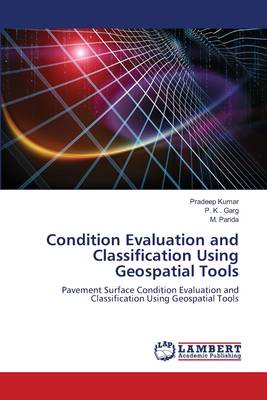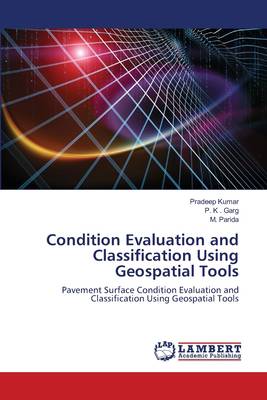
- Afhalen na 1 uur in een winkel met voorraad
- Gratis thuislevering in België vanaf € 30
- Ruim aanbod met 7 miljoen producten
- Afhalen na 1 uur in een winkel met voorraad
- Gratis thuislevering in België vanaf € 30
- Ruim aanbod met 7 miljoen producten
Zoeken
Condition Evaluation and Classification Using Geospatial Tools
Pradeep Kumar, P K Garg, M Parida
Paperback | Engels
€ 80,45
+ 160 punten
Omschrijving
Maintenance of pavements is an important aspect for the road authorities all over the world. The first step towards maintenance is pavement evaluation. Pavement could be evaluated through different types of distress experienced, such as cracking, disintegration and surface deformation. Pavement surface distresses, such as cracks and pothole are visible imperfections on the surface of the pavements. At present, there are various methods for conducting distress surveys, recording and analysing distress survey data. Traditionally, pavement condition data are gathered by human inspectors who walk or drive along the road to assess the distresses and subsequently produce reports, but it is costly and time-consuming, and endangers the safety of the personnel involved. Also, the large differences exist between the actual condition and evaluation results because of the subjectivity of the evaluation process. This work proposed methodologies for automatic assessment of pavement surface distresses using geospatial tools and soft computing techniques.
Specificaties
Betrokkenen
- Auteur(s):
- Uitgeverij:
Inhoud
- Aantal bladzijden:
- 112
- Taal:
- Engels
Eigenschappen
- Productcode (EAN):
- 9786202923583
- Verschijningsdatum:
- 29/10/2020
- Uitvoering:
- Paperback
- Formaat:
- Trade paperback (VS)
- Afmetingen:
- 152 mm x 229 mm
- Gewicht:
- 176 g

Alleen bij Standaard Boekhandel
+ 160 punten op je klantenkaart van Standaard Boekhandel
Beoordelingen
We publiceren alleen reviews die voldoen aan de voorwaarden voor reviews. Bekijk onze voorwaarden voor reviews.











